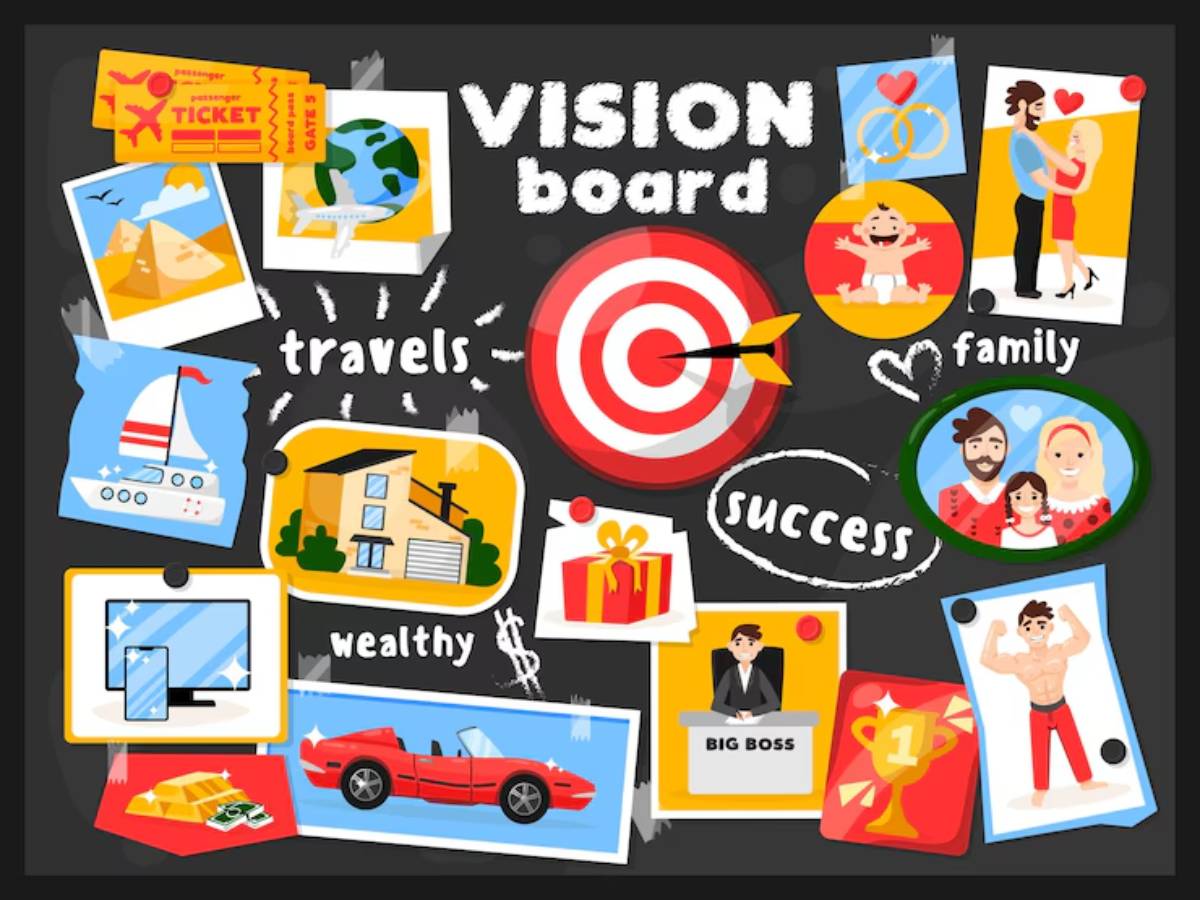
Analytical Thinkers and Vision Boards: Making It Work
Let’s be honest. The idea of sitting down with glue sticks, magazine clippings, and vague affirmations might make some analytical brains twitch. Vision boards? Isn’t that more mood lighting than measurable outcomes?
Not necessarily.
If logical planning and structure make the world feel clearer and more manageable, there’s still a place for vision boards in the process—especially when approached with a method that supports data-driven visualisation, logical vision planning, and pragmatic goal mapping.
This isn’t about turning spreadsheets into dream collages (though hey, no shame if that’s your style). It’s about honouring how analytical minds naturally process information—through clarity, context, and control—and using those strengths to make vision boards that actually work.
But First: What Do Analytical Thinkers Actually Need?
While others may be happy pasting dreamy quotes across their boards.
An analytical thinker craves:
- Measurable goals
- Realistic timelines
- Strategic breakdowns
- Clarity and logic
- And ideally, a connection to data or past performance
So the vision board can’t be just about “vibes.” It has to feel like a tool—something functional, not just aspirational.
Myth: Vision Boards Are Only for Dreamers
They’re not. Vision boards are visual planning systems. They’re just often presented in a way that doesn’t resonate with analytical types. But when reimagined, they can become powerful frameworks for tracking priorities, measuring progress, and staying connected to the why behind the work.
And let’s face it: even the most pragmatic plans benefit from motivation. Vision boards can be the emotional fuel for logical engines.
Step 1: Start With Clarity, Not Just Inspiration
Skip the vague Pinterest quotes and start by asking:
- What are the top 3–5 goals this year?
- What metrics or milestones define success?
- What does that success look like in your mind?
Instead of diving into cutting images, outline your goals like you would a project plan. That’s the foundation of your pragmatic goal mapping.
Step 2: Turn Metrics Into Meaningful Visuals
The key here? You don’t need to ditch numbers. You just need to represent them visually.
Let’s say one goal is to increase business revenue by 20%.
That could be shown as:
- A bar chart image showing growth
- A mock-up of a bank app with the new balance
- A visual dashboard representing KPI targets
Data-driven visualisation doesn’t mean abandoning emotion. It means pairing it with logic.
Step 3: Use Sections to Segment the Board
Think of this like a visual dashboard.
Divide your board into clear categories:
- Professional Development
- Health & Wellness
- Relationships & Social
- Financial Goals
- Personal Projects or Hobbies
Use grid layouts, colour-coded frames, or icons to keep these areas distinct. This speaks directly to a logical mind—it creates structure and focus.
Want to dive deeper into layout strategies that support this kind of clarity? Best Vision Board Layouts for Maximum Clarity has you covered.
Step 4: Incorporate Mini Checklists and Progress Trackers
This is where a vision board starts acting like a visual project manager.
For each section, add:
- A sticky note with quarterly benchmarks
- A small tracker to tick off actions or milestones
- A timeline path showing progress stages
This keeps your brain engaged and gives you a dopamine hit every time something gets checked off.
Step 5: Include Visual Models or Frameworks
Here’s a powerful shift: instead of quotes, use systems.
- Add a photo of a calendar layout for habit-building
- Paste a funnel diagram for marketing goals
- Sketch a mind map of content themes
- Use pie charts or Venn diagrams for life balance visuals
This kind of logical vision planning speaks the language of your analytical brain. It allows abstract dreams to be mapped in real-world frameworks.
Step 6: Make Space for Mindset (With Boundaries)
Now, don’t skip this just because it sounds “woo.” Analytical thinkers need mindset reminders, often more than they realise.
But instead of fluffy affirmations, choose ones that reinforce process and control:
- “Progress over perfection.”
- “Small steps daily.”
- “What gets tracked gets improved.”
- “Focus is freedom.”
Place these near each section, almost like taglines for each goal.
Step 7: Keep It Dynamic (Not Decorative)
A common mistake? Creating the board and never looking at it again.
But that’s easy to avoid with a dynamic structure:
- Use magnetic boards or corkboards for easy updating
- Create a digital version in Trello, Notion, or Canva that can be adjusted monthly
- Set a calendar reminder to review your board every quarter
- Make it part of your weekly review ritual
This keeps the vision board relevant—which is essential for those who rely on systems to drive results.
Step 8: Blend It With a Spreadsheet or Planner
You don’t have to pick between visuals and data. Use both.
- Pair your board with a quarterly spreadsheet of KPIs
- Add goal breakdowns in your planner next to your visual inspiration
- Link digital boards to live dashboards with metrics (Google Sheets, Notion, etc.)
This gives you both motivation and measurement.
What Analytical Thinkers Might Struggle With—and How to Solve It

1. The Images Feel Too Vague
Fix: Choose literal visuals—mock-ups, diagrams, dashboards, locations, tools you’ll use.
2. It Feels Frivolous
Fix: Treat it like a visual project tracker. Use timelines, checklists, and measurable symbols.
3. It’s Not “Useful Enough”
Fix: Combine it with your productivity system. It’s the why behind the tasks.
What Makes It Work Long-Term?
When analytical minds see evidence of progress, they stay engaged. So the board has to evolve. It must track what’s done, what’s coming next, and what needs recalibration.
Tips:
- Add a DONE column for completed visual goals
- Move expired or irrelevant goals off the board
- Refresh visuals every season
- Tie visuals to actual review processes—monthly reflection, quarterly goal setting, etc.
When It Clicks: What It Can Do
When a vision board aligns with analytical strengths.
Something amazing happens:
- Motivation is no longer just emotional—it’s tied to outcomes
- Planning feels more meaningful because it has visual support
- Dreaming becomes part of the system, not outside of it
And best of all? The vision board stops feeling like someone else’s self-help trend. It becomes a real, functional reflection of goals—anchored in both logic and inspiration.
Want affirmations that feel grounded and effective? Check out Affirmations to Pair with Your Vision Board for goal-oriented language.
A Vision Board Is a Strategy Tool

Forget the glitter and glue for a moment. A vision board, when designed for an analytical thinker, becomes a strategic visual tool—like a mood board for high-performance planning.
It’s not about abandoning your logic. It’s about using it differently. About letting your brain see the finish line and the map.
So build a board that makes sense. That includes structure. That aligns with how your mind processes vision. One that’s rooted in metrics, movement, and meaning.
Because planning with precision doesn’t mean you have to leave inspiration behind. You can build a future that speaks both your language and your imagination—data, diagrams, dreams, and all.


